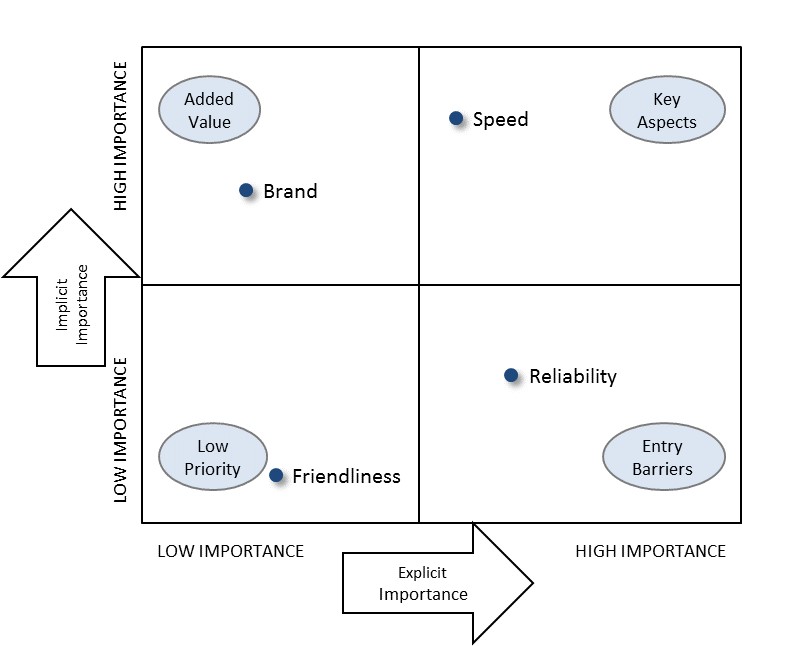In studies and surveys evaluating the satisfaction of the customers we work with at Openmet, we always advise our clients to include measurements of the importance for their customers of the various aspects being evaluated. Beyond how satisfied or dissatisfied they may be with the aspects or KPIs (indicators) of the product/service evaluated, it is also very useful to have information on importance to help set the priorities of the plan of action for improvement.
By contrasting information on satisfaction and importance, it is far easier to reach conclusions and make better decisions (for example, see the recent article on Importance –Satisfaction Decision Charts).
In this article, we want to show you the advantages and disadvantages of two of the traditional methods usually used to obtain information on importance: explicit evaluation and implicit evaluation.
To start off, let’s take a look at a brief summary table of the features of each of these methods:
| Advantages | |
| Explicit Importance The importance of a given aspect is measured by asking customers a direct question |
|
| Implicit Importance (also called inferred or derived) The importance of a given aspect is assessed based on statistical calculations (the correlation of other questions with an objective question on overall satisfaction is typically used) |
|
Implicit importance is increasingly used for its advantages, including fewer questions. This is done on the assumption that the result obtained through explicit or implicit questioning is the same; however, this is not as true as it may seem: evaluations of explicit and implicit importance do not necessary need to coincide.
The differences between implicit and explicit importance produce some interesting matrices for results analysis that we can use to draw conclusions on needs and priorities through the different quadrants.
Let’s take a look at one of these decision charts; here, we have placed 4 example attributes in each quadrant:
We can see four possible quadrants:
- Critical points: attributes of the product or service (such as speed, in our example) with explicit and implicit importance, which are usually the key sales points.
- Value-added: attributes of the product or service (such as brand, in our example) with low explicit importance and high implicit importance. These aspects often relate to areas that customers do not consider important (for example, because they are embarrassed about it or because they are not fully aware of how important they are) and which are closely linked to overall satisfaction. They are aspects that can be turned into opportunities for sales and communication.
- Entry barriers: attributes of the product or service (such as reliability, in our example) with high explicit importance and low implicit importance. These aspects often relate to areas that are essential for the product or service but whose existence we take for granted. It is impossible to have a product or service on the market without these aspects, but it is difficult for them to act as product differentiators because those who are in the market already have this attribute.
- Low priority: attributes of the product or service (such as friendliness, in our example) with low explicit and implicit importance, which typically relate to peripheral attributes with little influence on satisfaction.
Conclusion
With customer satisfaction surveys and studies, it is very useful for subsequent decision-making to include the measurement of the importance of different attributes for customers. This measurement can be explicit (by asking the customer) or implicit (obtained from statistical calculations), depending on the needs and benefits of each method.
Although the implicit importance method is being used more and more because it reduces the number of questions required, we should not assume that it gives the same results as an explicit evaluation. Using both importance evaluation methods and comparing their results is also a useful resource for making informed final decisions.






One thought on “Measuring Explicit vs. Implicit Importance in Customer Satisfaction Studies”
Comments are closed.